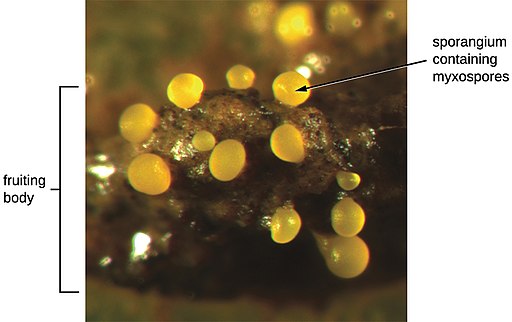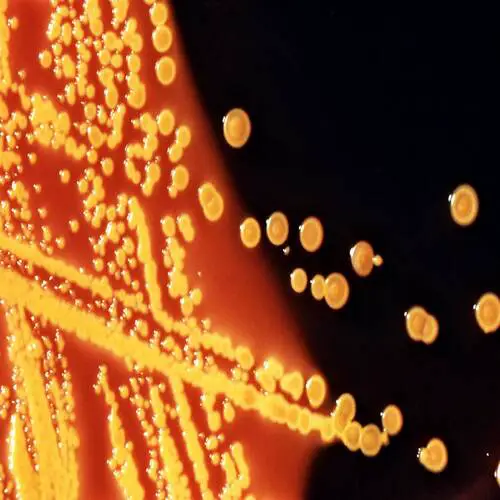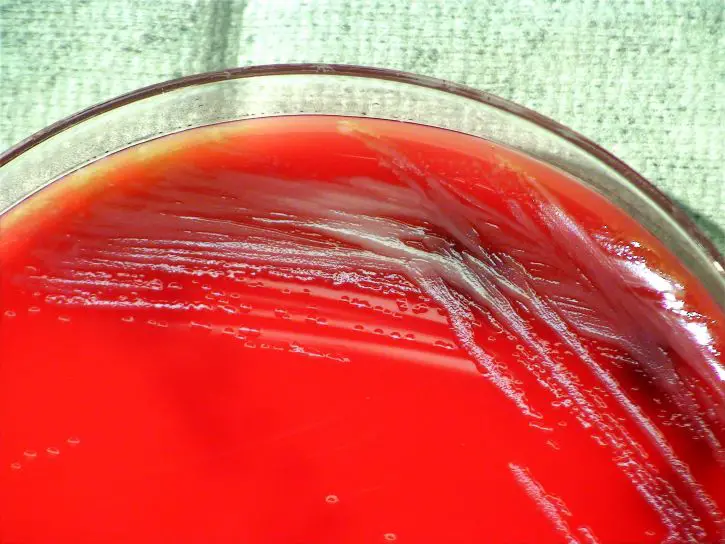Kingdom Fungi
Types, Examples, Morphology, Structure and Importance
Fungi belong to their own kingdom. Compared to higher plants and animals, they obtain their nutrition through a range of ways including degradation of organic material and symbiosis (as lichen) among others.
As such, they are categorized as heterotrophic because they are unable to synthesize their own food (they lack chlorophyll). They can reproduce sexually or asexually with a majority of fungi being spore producers.
Examples include:
- Molds
- Penicillin
- Yeast
- Truffles
- Mushrooms
Types of Fungi
The different types may be described based on their phylum.
These include:
Ascomycota
Also referred to as Sac Fungi, phylum Ascomycota is the largest phylum (makes up about 75 percent) of the Kingdom Fungi with well over 60,000 species of organisms.
Organisms that are grouped under this phylum are collectively known as ascomycetes including yeast (single celled organisms) and other filamentous fungi (hyphal). Whereas some are saprobes, others live as parasites while some form symbiotic relationships with other organisms to survive.
In phylum Ascomycota, the ascus (sac) is the defining trait. This is the site of nuclear fusion in which division takes place during reproduction. For most part, this phylum is composed of heterotroph organisms that obtain nutritional energy from other organisms (living or dead) as well as other organic compounds.
Some of the organisms in this phylum are also capable of forming a symbiotic relationship with other organisms like algae and arthropods for their survival. With regards to reproduction, Ascomycota reproduce sexually or asexually. Sexually, they reproduce through the production of spores and the production of mitospores during asexually reproduction.
This being the largest phylum, organisms that fall in this category are also divided into the following sub-phyla:
- Taphrinomycotina
- Saccharomycotina
- Pezizomycotina
Some species from the phylum Ascomycota: Alternaria Fungi
Taphrinomycotina - Studies have shown this sub-phylum (Taphrinomycotina) to be highly diverse. One of the unique traits associated with Taphrinomycotina is the absence of ascogenous hyphae.
Some of the organisms in this group include yeast (that produce through binary fission) and Taphria (plant parasitic) that exist as yeast and hypha among others. Some of the organisms in this classification are capable of producing fruiting bodies known as ascomata.
These are in the species known as Neolectomycetes.
Saccharomycotina - Most of the organisms (yeast) that fall under this sub-phylum are saprotrophs. The sub-phylum also contains a number of parasitic organisms that tend to be pathogenic.
Studies have shown these organisms to largely reproduce through the formation of naked asci (cells that produce spores) where ascopores are produced.
Pezizomycotina - The sub-phylum is unique compared to the other sub-phyla in that many of the organisms in this category produce fruiting bodies. These spore producing organs will be found in such organisms as perithecia, cleistothecia and chasmothecia among others.
Some of the organisms in this category are saprotroph that obtain their nutrition from a variety of material such a plant tissues and those that survive through symbiotic relationships with other organisms.
Zygomycota
Also known as conjugation fungi, the phylum Zygomycota is composed of well over 900 species that are categorized as either Zygomycetes (live as parasites of commensals in the gut of arthropods) and Trichomycetes (found in aquatic environments or gut of arthropods).
One of the main traits of these organisms is that they produce zygospores in sexual reproduction. However, some of the organisms under this classification are capable of asexual reproduction and will reproduce through the production of spores known as sporangiophores.
Studies have showed this phylum to bridge
between such lower fungi as slime molds and higher fungi such as Basidiomycota.
Organisms that form the sub-phylum Zygomycota can be found in a wide range of environments from land to aquatic environments where they obtain their nutrients as saprophytes (from fruits among others) by living in the guts of arthropods, through symbiotic relationship with plants and other organisms as well through parasitism where they infect various plants and animals.
Some of the other traits of phylum Zygomyota include:
- Produce chitin in their cell wall (a characteristic of all true fungi)
- Tend to grow as mycelia
- Form hyphae
- Produce zygospores in their zygosporangium
Chytridiomycota
Also known as Hybrids, Chytridiomycota can be found in a wide range of environments from land to aquatic environment.
Compared to other types of fungi, Chytridiomycota is the only phylum that contains fungi that are capable of moving from one point to another.
These cells, known as zoospores, have developed a posterior flagellum that make it possible for the cell to be motile. Most of the organisms in this phylum are saprophytes and obtain their nutrients from a variety of organic substances in land and aquatic environments.
Some are pathogenic and infect the host by sensing a difference in chemical gradient.
Most of the Chytrids are single
celled organisms with a few being multicellular organisms that may be described
as hyphae.
Glomeromycota
Glomeromycota are fungi with highly branched arbuscules. They are largely dependent on a symbiotic relationship with plants where many of them form the arbuscular mycorrhizas with such parts of the plant as roots.
With regards to reproduction, Glomeromycota reproduce through the production of spores (asexually). Through their association with plants, Glomeromycota obtain some of the products of photosynthesis from the plant through the arbuscules to be stored and used by the organism.
Basidiomycota
Basidiomycota is also one of the largest phylum with well over 30,000 fungi species. They include such organisms as the toadstool and mushrooms and tend to grow as hyphae.
They are characterized by the presence of a basidium, which is a structure that is shaped like a club. Some of the organisms in this category include smuts and rusts.
Other characteristics of this phylum include:
- Exist as either single celled or multicellular organisms
- Can reproduce sexually or asexually
Morphology and Structure of Fungi
There are a wide variety that range from the smallest unicellular fungi such as yeast to larger multicellular capable of forming hyphal threads or false roots. For this reason, fungi are also classified according to their morphologies.
The following are classifications of fungi based on morphology:
Yeast
Yeast are single celled fungi that can be found in a variety of environment from soil and plants to animal and aquatic environments. Unlike bacteria, yeasts are also eukaryotic, which means that they have different types of organelles that are common in the cells of higher animals.
The Saccharomyces cerevisiae is a good example of yeast that ranges between 1 and 7 micrometers in size. When viewed under the microscope, these organisms may be pigmented on their surface.
As with the cells or higher organisms, the S. cerevisiae contains such organelles as a membrane bound nucleus, a vacuole, mitochondria and the Golgi apparatus as well as the E.R (endoplasmic reticulum). The cell wall of these yeast is composed of glucan (a polysaccharide compound) and mannoproteins.
As for the genome, research has shown these yeast to carry a single, linear double stranded DNA that consists of several repeated sequences. For yeast, the primary mode of reproduction is through budding.
Following the copying of the genetic material, a bud is formed on the surface of the cell that ultimately breaks off with its genetic material and grows to form a new cell.
Yeast-like Fungi
Yeast-like fungi are yeast that partly grow like normal yeast. However, they also attach to each other to form what is known as a pseudo hyphae (not a true hyphae).
Candida albicans is one of the most common. When viewed under the microscope, these organisms have been shown to consist of several layers that make up the cell wall.
As with yeast, the wall of C. albicans contains layers of mannoproteins, lipids and a beta glucon, a chitin inner layer that strengthen the cell wall. Like yeast, C. albicans also appear spherical or ovoid in shape and measure between 4 to 8 micrometers.
Since they also reproduce through budding, like yeast, C. albicans may end up creating an elongated chain of cells as they continue dividing to form the pseudohyphae. Some studies suggest that some of the yeast-like fungi tend to form true hyphae in the process.
Yeast-like fungi such as C. albicans are also described as being polymorphic fungus. This is because they present four types of morphology including the yeast cell, pseudohyphae, hyphae as well as chlamydospores.
As such, they are likely to be seen having varying appearance when viewed under the microscope depending on such conditions as the availability of nutrition, pH and temperature among others.
The type of morphological appearance of these cells has also been associated with the pathogenicity of the organism. Given that they are not bacteria, some of these organisms (yeast-like fungi) have characteristics associated with eukaryotic cells in that some have been shown to contain a nucleus and other essential organelles.
Molds
Mold (mould) are a type of fungi that often grow well in favorable environments with warmth and moisture. They can be found growing on various surfaces such as food surfaces from which they obtain their nutrients.
Compared to yeast, molds are multicellular organisms. As such, they can be seen with the naked eye without using a microscope. However, when viewed under the microscope, it's possible to observe numerous filaments (hyphae) that are collectively referred to as Mycelium.
While these organisms are microscopic, it is their numerous hyphae (that form the mycelium) that make it possible to see mold as it grows on food surface (bread, oranges etc).
There are two main types of mycelium depending on their functions.
These include:
Vegetative mycelium - Vegetative mycelium include the hyphae that penetrates into the substrate and absorbs nutrients for the continued growth and development of the organisms. These hyphae therefore act like plant roots.
Aerial mycelium - Aerial mycelium are the hyphae that are located above the food substance. When viewed closely under the microscope, aerial mycelium contain a spherical structure at the top of the hyphae.
These are known as the conidia and sere as the reproductive part of the mold. This part produces spores (asexual reproduction) that can grow in favorable conditions.
Read about Penicillium Microscopy here
Dimorphic Fungi
Dimorphic fungi exist in the form of mold and yeast. Examples of these fungi include Penicillium marneffei and Mucor circinelloides.
Most of these organisms are capable of switching from between
the two forms in a process commonly referred to as dimorphic switching. As
such, they are viewed as having hyphal threads or as single celled organisms
under the microscope (yeasts).
Uses and Disadvantages of Fungi
As mentioned, there are a wide variety across the world that can be found in different habitats. Depending on the type of fungi, they can be useful and beneficial or present various disadvantages.
The following are some of the main benefits and disadvantages:
Disadvantages
- Molds tend to cause food damage and can release spores that can cause a range of health problems such as breathing difficulties. Moreover, molds my release toxins (aflatoxin or myotoxins among others) that can cause serious health problems to a human being.
- While mushrooms are important as food sources, some are poisonous and can cause death when consumed. A number have been shown to not have an antidote and therefore cause serious health problems and even death given that there is no treatment.
Some of the fungi such as yeast and Candida albicans tend to be pathogenic and cause serious infections to the host (man).
Importance/Uses of Fungi
Fungi have a variety of uses that make them very
important. These include:
- Mycorrhizal relationship between some of the fungi and plants benefits various plants in many ways. For instance, whereas the fungi obtains nutrients from the plant, the fungi may make various material such as phosphates readily available for the plant.
- Insecticides and medicines - Some of the fungi act as biological insecticides. For instance, such Fungi as Beauveria bassiana allow farmers to control such pests as the emerald ash borer that tend to cause damage to plants. As such, these fungi are important in agriculture and in homes. On the other hand, such fungi as Penicillum species are important because they are used to develop vaccines to treat various diseases.
Some of the other uses include:
- In bakery
- For alcohol production
- Help in degradation of organic material
Pages to learn more about specific types of fungi:
Aspergillus - Characteristics, Types and Morphology
Alternaria - Classifications, Characteristics and Pathogenesis
Trichoderma - Classification, Characteristics and Reproduction
Pezizomycotina - Habitat, Examples, Classification and Reproduction
Claviceps - Different Species, Structure, Morphology and Life Cycle
Verticillium - Characteristics, Life Cycle, Morphology and Culture
Botrytis - Species, Habitat, Life Cycle, Infection and Culture
Continue to read about Unicellular and Multicellular Organisms as well as Heterotrophs.
Return to Microorganisms Main Page
Return to Mycology in general main page
Return from Fungi Main Page to MicroscopeMaster Home
References
Carris, L. M., C. R. Little and C. M. Stiles. 2012. Introduction to Fungi. The Plant Health Instructor. DOI:10. 1094/PHI-I-2012-0426-01
Koji Yokoyama, Haruo Kaji, Kazuko Nishimura and Makoto Miyaji. The role of microfilaments and microtubules
during pH-regulated morphological transition
in Candida albicans. 1994.
Smith and David Read. Mycorrhizal Symbiosis. The symbionts forming arbuscular mycorrhizas. 2008, Pages 13–41.
https://www.researchgate.net/publication/293605511_YEAST_DESCRIPTION_AND_STRUCTURE
https://courses.lumenlearning.com/wm-biology2/chapter/chytridiomycota/
Find out how to advertise on MicroscopeMaster!
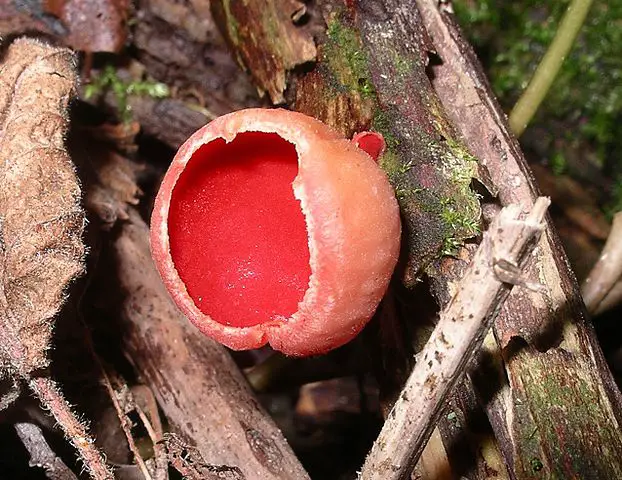
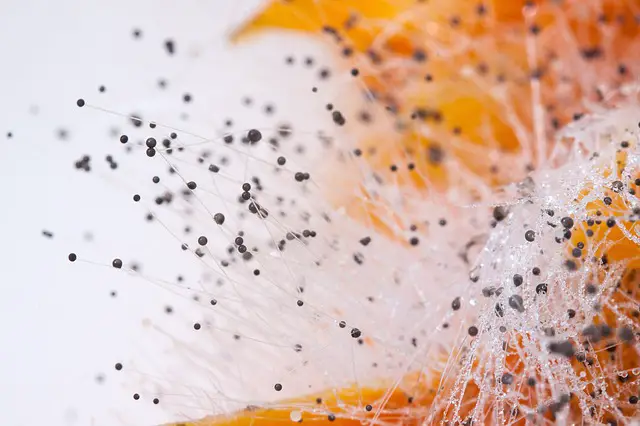
![Chytrid Fungus CSIRO [CC BY 3.0 (https://creativecommons.org/licenses/by/3.0)], via Wikimedia Commons Chytrid Fungus CSIRO [CC BY 3.0 (https://creativecommons.org/licenses/by/3.0)], via Wikimedia Commons](https://www.microscopemaster.com/images/CSIROChytridFungus.jpg)
![Basidiomycota cross-section by Doc. RNDr. Josef Reischig, CSc. (Author's archive) [CC BY-SA 3.0 (https://creativecommons.org/licenses/by-sa/3.0)], via Wikimedia Commons Basidiomycota cross-section by Doc. RNDr. Josef Reischig, CSc. (Author's archive) [CC BY-SA 3.0 (https://creativecommons.org/licenses/by-sa/3.0)], via Wikimedia Commons](https://www.microscopemaster.com/images/Basidiomycotacrosssection.jpg)


